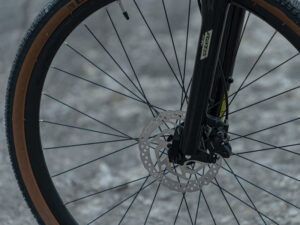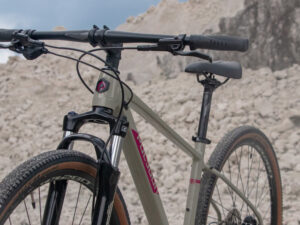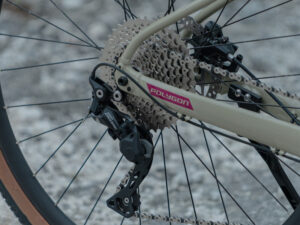As someone with a passion for trying out various hobbies, you may find yourself wanting to explore different cycling terrains such as road and mountain biking. If you end up enjoying both, a hybrid bike may be an excellent option for you. These bikes combine features making them versatile and suitable for various riding styles. It’s worth noting that each type comes with its own features and benefits.
What is a hybrid bike exactly?
A hybrid bike combines the best features of road, mountain, and touring bikes, making it suitable for multiple terrains and riding styles. One of the most important features of a hybrid bike is its comfortable upright riding position, which is perfect for long-distance rides on both road and off-road trails. The typical wider tires provide stability and traction on uneven terrain, making it a popular choice among bikers who enjoy exploring new terrains.
6 Main Features of Hybrid Bikes
Hybrid bikes have six main features which are brakes, frame, gearing, handlebars, suspension, and tires and each of them is adjustable based on your need and comfort.
1. Brakes: Rim Vs Disc

Rim brakes are the traditional option, using brake pads that grip the rim of the wheel to slow down or stop the bike. While rim brakes are lightweight, affordable, and easy to maintain, they may not perform well in wet conditions and can wear down the wheel rim over time.
Disc brakes use a disc rotor attached to the wheel hub with brake callipers that grip the rotor to slow down or stop the bike. They offer superior stopping power and better modulation, a better choice for wet or muddy conditions. Oftentimes, they can be more expensive, require more maintenance, and can be heavier than rim brakes.
2. Frame Material: Aluminum, Carbon, Titanium, or Steel

Hybrid bikes typically have frames made from a variety of materials, including lightweight options such as aluminium and carbon fibre, and titanium. Aluminium frames are often the most affordable option, as they are lightweight and durable but less expensive to produce. Carbon fibre frames are more expensive than aluminium, but they are even lighter and offer a smoother ride due to their ability to dampen vibrations. Titanium frames are the most expensive option and are known for their strength, durability, and corrosion resistance.
Some hybrid bikes also come with steel frames, which can be a good option for those looking for a more traditional ride feel or seeking a more affordable option. Steel frames offer a smoother ride due to their ability to absorb shocks and vibrations, but they are generally heavier than other options.
3. Gearing: Derailleur system Vs Internal Gear Hub System

One of the most common gearing systems for hybrid bikes is the derailleur system, which uses a series of gears that are shifted by a cable mechanism. Derailleur systems typically offer a wide range of gears, making them suitable for a variety of terrain, including hills, flats, and descents. However, they require more maintenance and can be prone to damage if not utilized properly.
Another option is the internal gear hub system, which houses all of the gears inside the hub of the rear wheel. This system is generally more durable and requires less maintenance than a derailleur system. This also offers a cleaner look and can be easier to use for those who are new to cycling. However, the internal gear hub system has fewer gears and may not be suitable for more challenging terrain.
4. Handlebars: Flat Vs Riser
Hybrid bikes and MTBs often come with flat handlebars as they offer a more comfortable and relaxed riding position. This is great for casual riders who are looking for a more comfortable and leisurely experience. Another benefit of flat handlebars is the increased control they offer when riding on rough terrain or making sharp turns. The wider handlebars give riders a greater sense of stability and control over their bike, which is especially important when navigating technical terrain. However, flat handlebars are less aerodynamic than other handlebar types and may cause more wind resistance when riding at higher speeds, which can be a disadvantage for those who prioritize speed and efficiency.
In comparison to flat handlebars, riser bars provide a compromise between control and aerodynamics. While they may not be as aerodynamic as drop bars, they offer some benefits in reducing wind resistance compared to flat bars. This makes them a good choice for those who want to balance comfort and efficiency while riding. Overall, the choice between handlebar types ultimately comes down to personal preference and the type of riding you plan on doing.
5. Suspensions: Front, Full, or None
Front suspension, also known as a suspension fork, involves a shock-absorbing mechanism built into the front fork of the bike. This system allows the front wheel to absorb impact and reduces the shock transferred to the rider’s arms and upper body. Front suspension is ideal for riders who frequently ride on bumpy or uneven terrain, such as gravel or dirt paths. However, it may add weight to the bike and increase the cost.
Full suspension, also known as dual suspension, involves both front and rear suspension systems. This system provides maximum shock absorption and is ideal for riders who frequently ride on rough and technical terrain, such as mountain trails. Full suspension can be heavy and expensive, but it provides the most comfortable ride in the toughest conditions.
Finally, some hybrid bikes come with no suspension at all. This type of bike is often referred to as a “rigid” bike, and it features a traditional frame with no shock absorbers. Rigid bikes are lightweight and efficient, making them ideal for road riding or commuting. However, they may not be as comfortable on rough terrain or off-road riding.
6. Tires
When choosing tires for a hybrid bike, the first consideration is the type of riding you’ll be doing. there are a few different types and sizes to consider such as:
-
- Size: The size of your tire is important for a few reasons. You want to make sure it fits your bike frame properly, and you also want to consider the type of riding you’ll be doing. Common tire sizes for hybrid bikes are between 27.5 and 29 inches.
- Tread: The tread of your tire affects its grip on different surfaces. If you’ll mostly be riding on paved roads, a smoother tread will be more efficient. If you plan on taking your bike off-road or on gravel paths, a knobbier tread will give you more traction.
- Width: The width of your tire also affects its performance. Wider tires provide more stability and cushioning, which can be great for longer rides or bumpy terrain. Narrower tires are lighter and more aerodynamic, which can help you go faster on smooth roads.
- Materials: Hybrid bike tires are typically made from rubber, but the type of rubber and other materials used can affect the tire’s durability and performance. Look for tires with puncture-resistant layers or reinforced sidewalls if you plan on riding in areas with a lot of debris.
Discover Quality Hybrid Bike at Rodalink
Conclusion

Hybrid bikes are a great choice for those who want a versatile and comfortable ride that can handle a variety of terrains. When choosing a hybrid bike, it’s important to consider factors such as frame material, gearing, handlebars, and tires to ensure that you find a bike that suits your riding style and needs. Whether you’re a beginner or an experienced cyclist, investing in a quality hybrid bike can provide a fun and rewarding riding experience.
Rodalink Malaysia offers various payment methods with a 0% instalment plan so you can get the most suitable hybrid bikes that answer your exploration needs. Check our current promotion to get the best deals including the free delivery option to your door and up to 40% additional discount.





